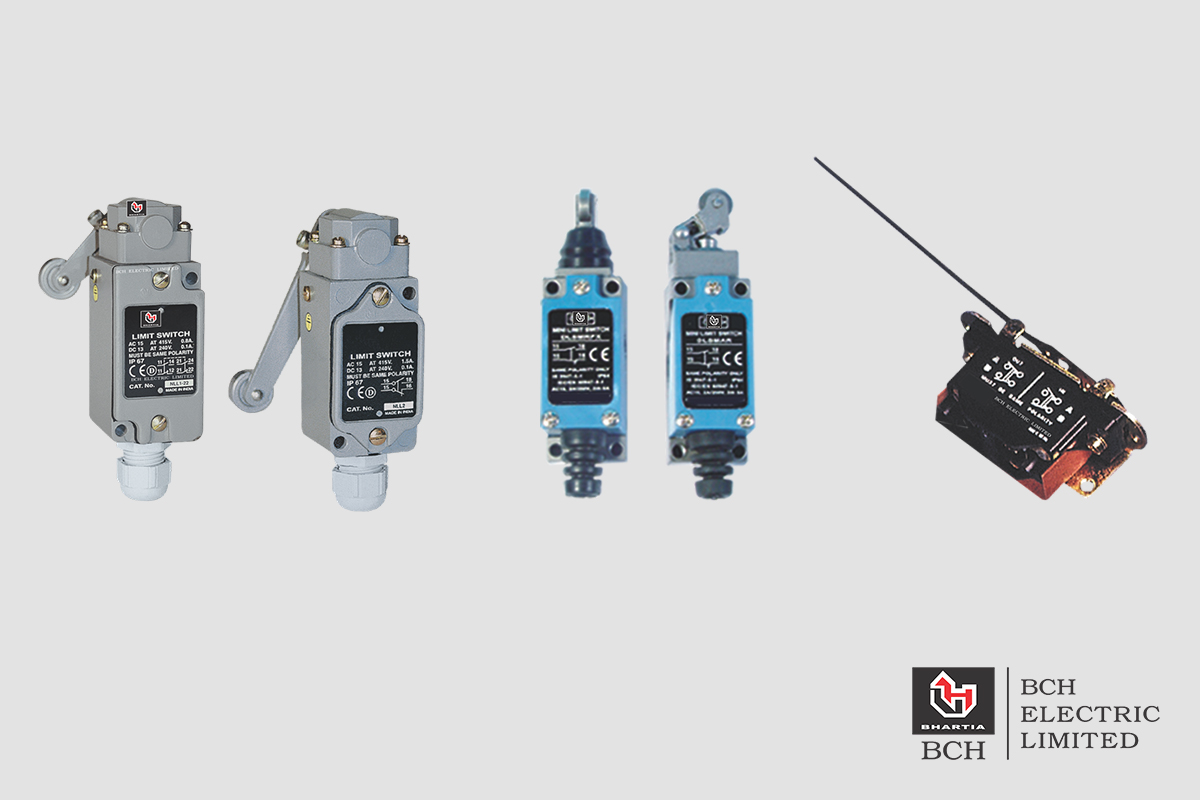Limit switches is an electromechanical switch that limits or stops the movement of an object when it reaches the predetermined point. With the motion of the object, limit switches mechanically get actuated or operated. The BCH Limit Switches find application in various industrial applications such as:
- Injection molding
- Hydraulic machines
- Special purpose machines
- Machine tools
- Conveyors, lifts, and escalators
- EOT cranes
- Material Handling
- Food & Beverages
- Packaging machinery
- Textile machinery
- Heating Ovens
- Drilling machine
- Tapping machines
- Valves application
Limit switches offered by BCH are highly reliable Limit Switches and widely appreciated for their reliable performance and long service life. It finds wide usage in various power plants, mining industries, cement plants, automotive, and Pulp & Paper industries. The motion of a machine part operates these switches.
These are also used for controlling machinery that is part of a control system, count objects passing a point or as safety interlocks. Basically, a limit switch is mainly an electromechanical device that contains an actuator that is linked to a set of contacts mechanically. When the actuator is connected with an object, the machine starts operating the contacts for making or breaking an electrical connection.
Owing to the ruggedness, easy installation, and reliable performance, limit switches are used in a variety of applications and varied environments. Limit switches can determine passing, positioning, presence, absence, and end of travel of an object. These are also used for defining the traveling limit of an object; hence, it is named as “Limit Switch.” A limit switch with a roller-lever operator is installed in a gate, which also indicates the position of a gateway to a control system.
A limit switch is wired through a control relay, a motor contactor control circuit, or as an input to a programmable logic controller.


